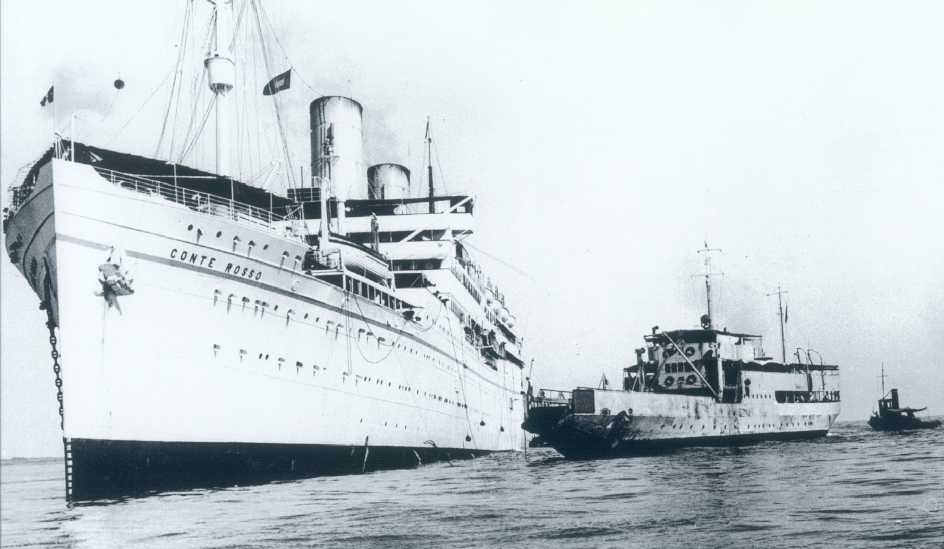|
|


|   |
|   |
|
Nota: Agostino Giordano, padre del Papas Emanuele Giordano, abbordò la nave "Conte Rosso" a Napoli il 30 agosto 1922, e arrivò al Porto di New York il 9 settembre 1922. La esperienza ispirò i seguenti poemi:
con i tuoi neri e bizzarri colori! Apri il gran velo di Santo Francesco, non essere tomba nell'Oceano fresco! Mi ti raccommando in nome di Dio, |
Il Conte Rosso viaggia tutto snello, Sentite il programma del Vapore: Una bella cuccettina per dormire, Durante il soggiorno sopra il mare, E rinascesti, o stella Conte Rosso, |
|
Note: Agostino Giordano, father of Papas Emanuele Giordano, boarded the ship "Conte Rosso" (Red Count) in Naples on August 30, 1922, and arrived at the Port of New York on September 9, 1922. The experience inspired the verses that follow:
with your black and bizarre colors! Open the great veil of Saint Francis, don't be a tomb in the cool ocean! I commend myself to you in God's name, |
The Red Count travels slender, slim, Listen to the program aboard the Steamer: A beautiful little berth to sleep in, During the sojourn at sea, And you were reborn, star "Conte Rosso," (English translation by A. Bodily) |
 The "Conte Rosso" was built in 1921 by W.Beardmore & Co, Ltd for Lloyd Sabaudo of Italy. Her details were - 18,017 gross tons, length overall 588.2ft x beam 74.2ft, two funnels, two masts, twin screw and a speed of 18 knots. There was accommodation for 342-1st, 214-2nd and 1,800-3rd class passengers. Launched on 10/2/1921, she sailed from Genoa on her maiden voyage to Naples and South America on 29/3/1922. After this voyage, she commenced sailings from Genoa to Naples and New York on 15/5/1922. In 1925 accommodation for 188-economic 2nd class passengers was added and on 27/2/1928 she commenced her last Genoa - New York crossing. Subsequently she was used on the South America service, and in 1932 was taken over by Lloyd Triestino. On 24/5/1941 she was torpedoed and sunk by the British submarine HMS UPHOLDER while 10 miles from Sicily, with the loss of 1,212 lives. ["North Atlantic Seaway" by N.R.P.Bonsor, vol.3, p.1368] |